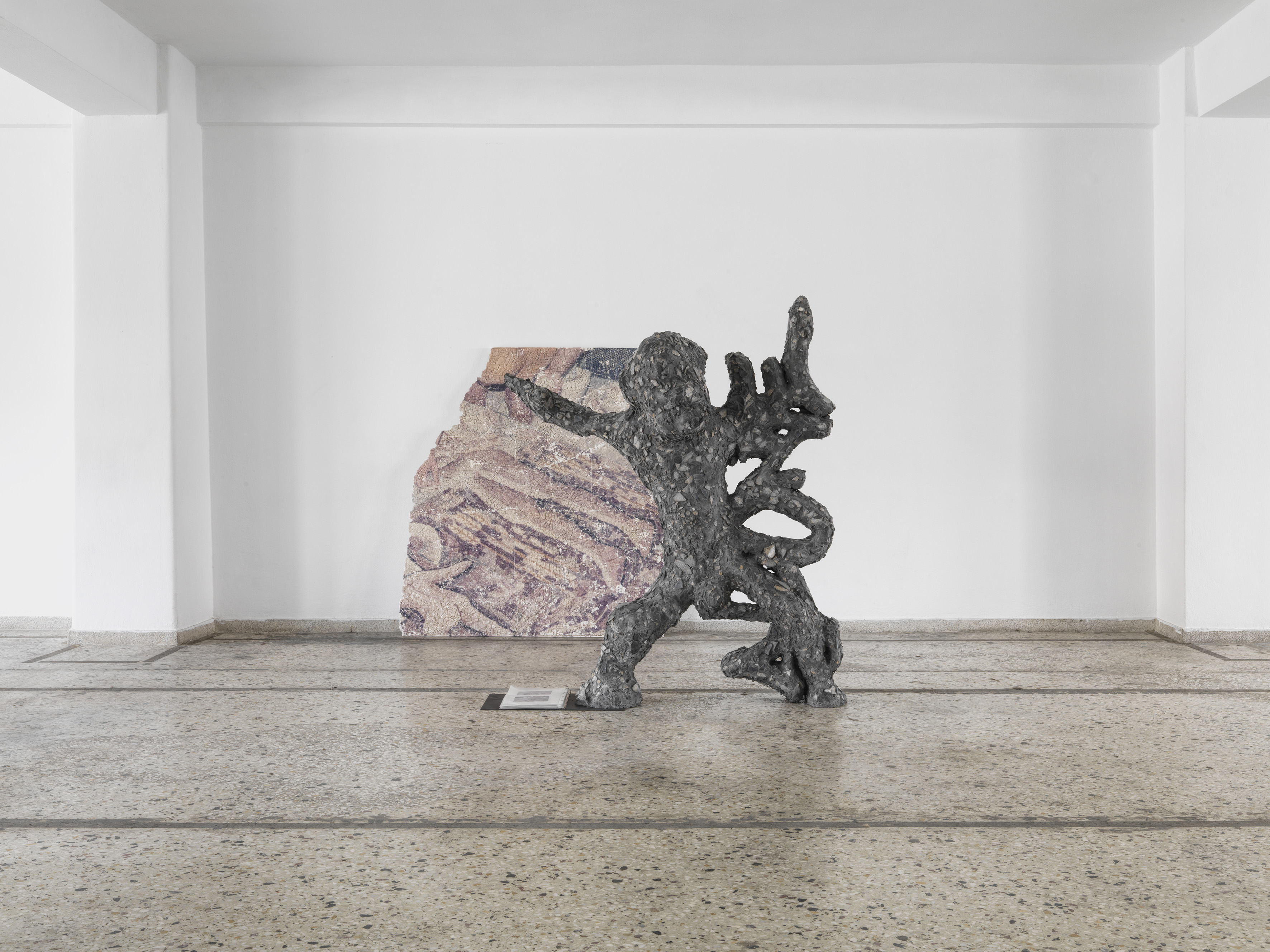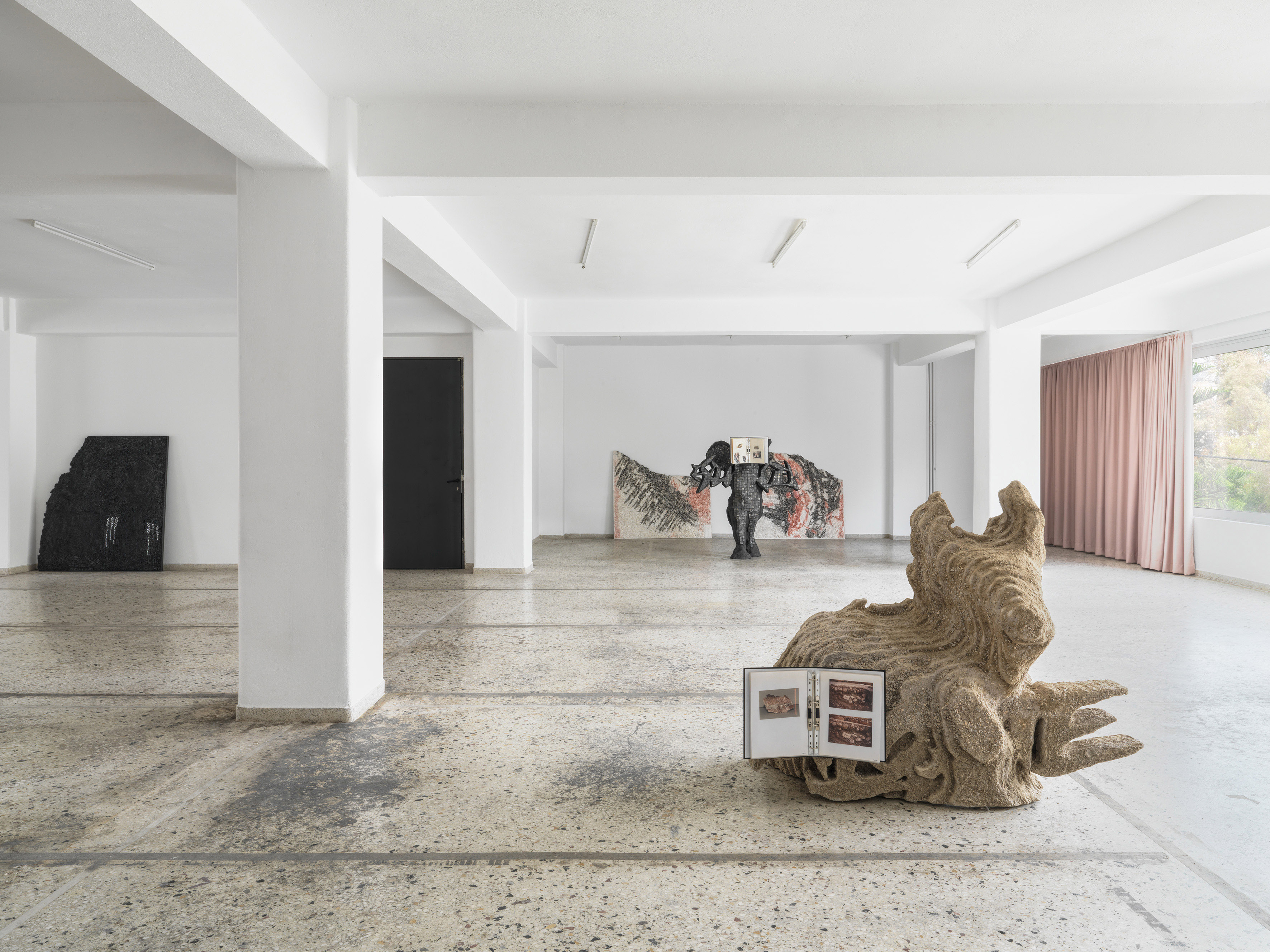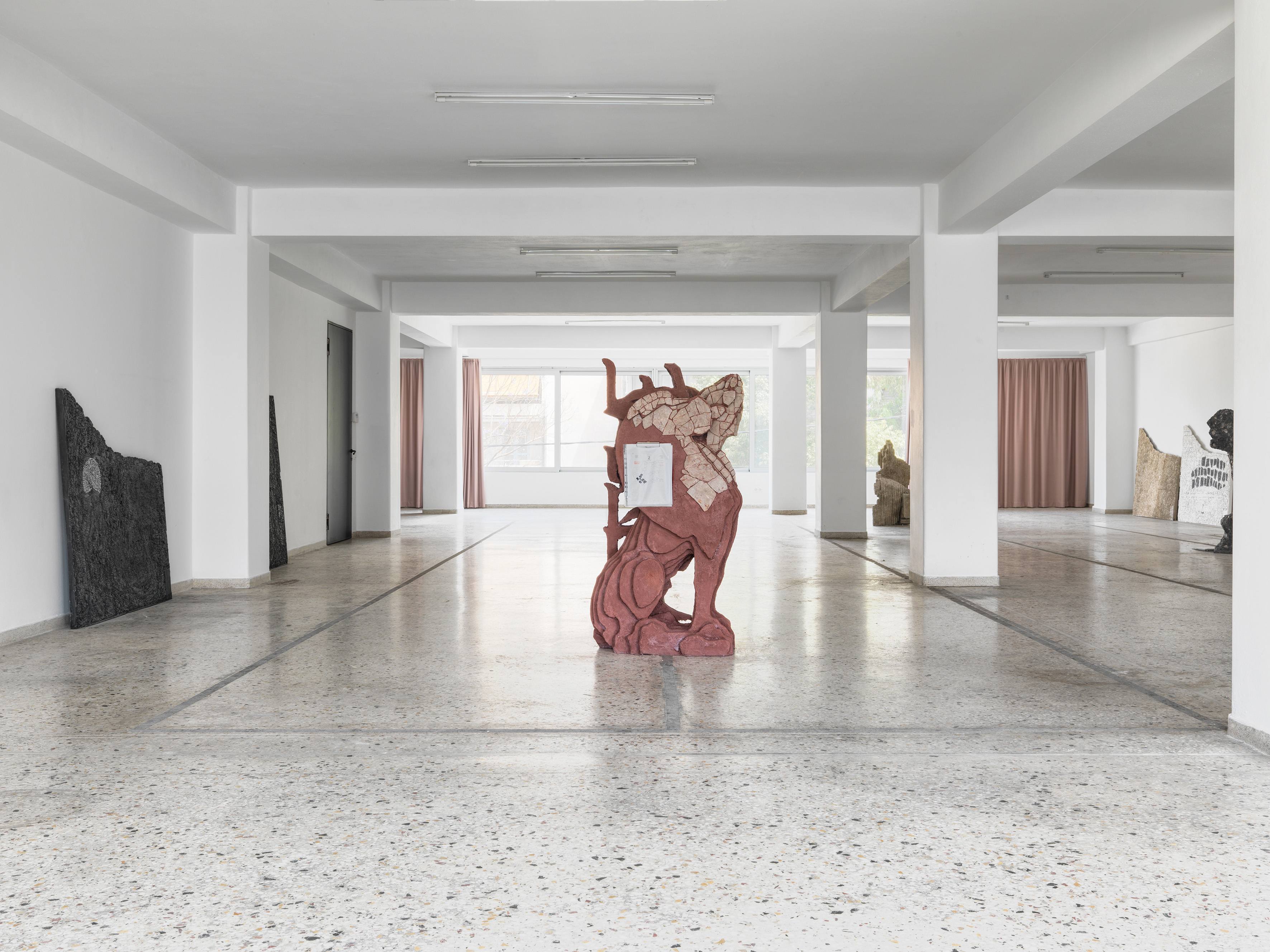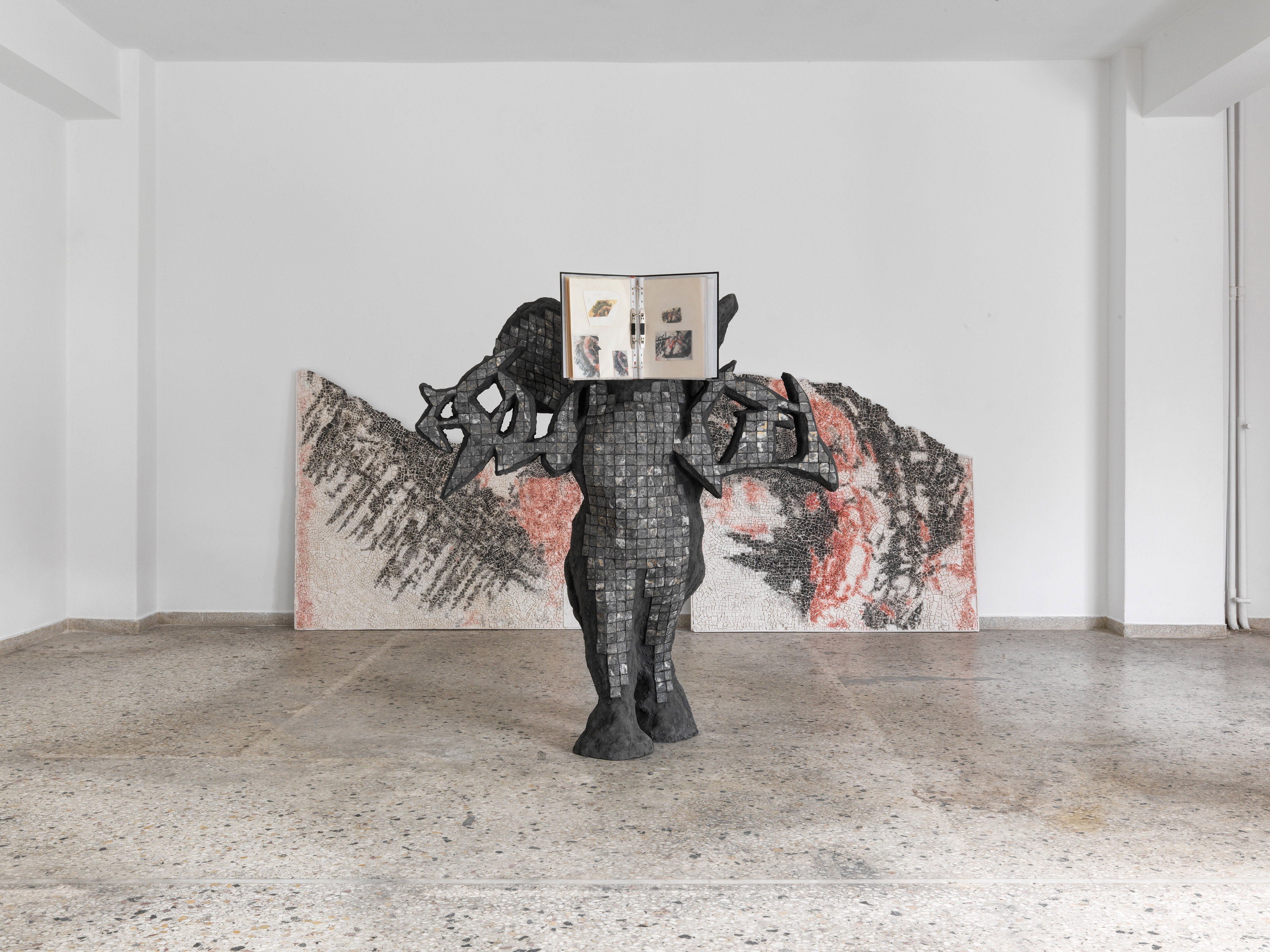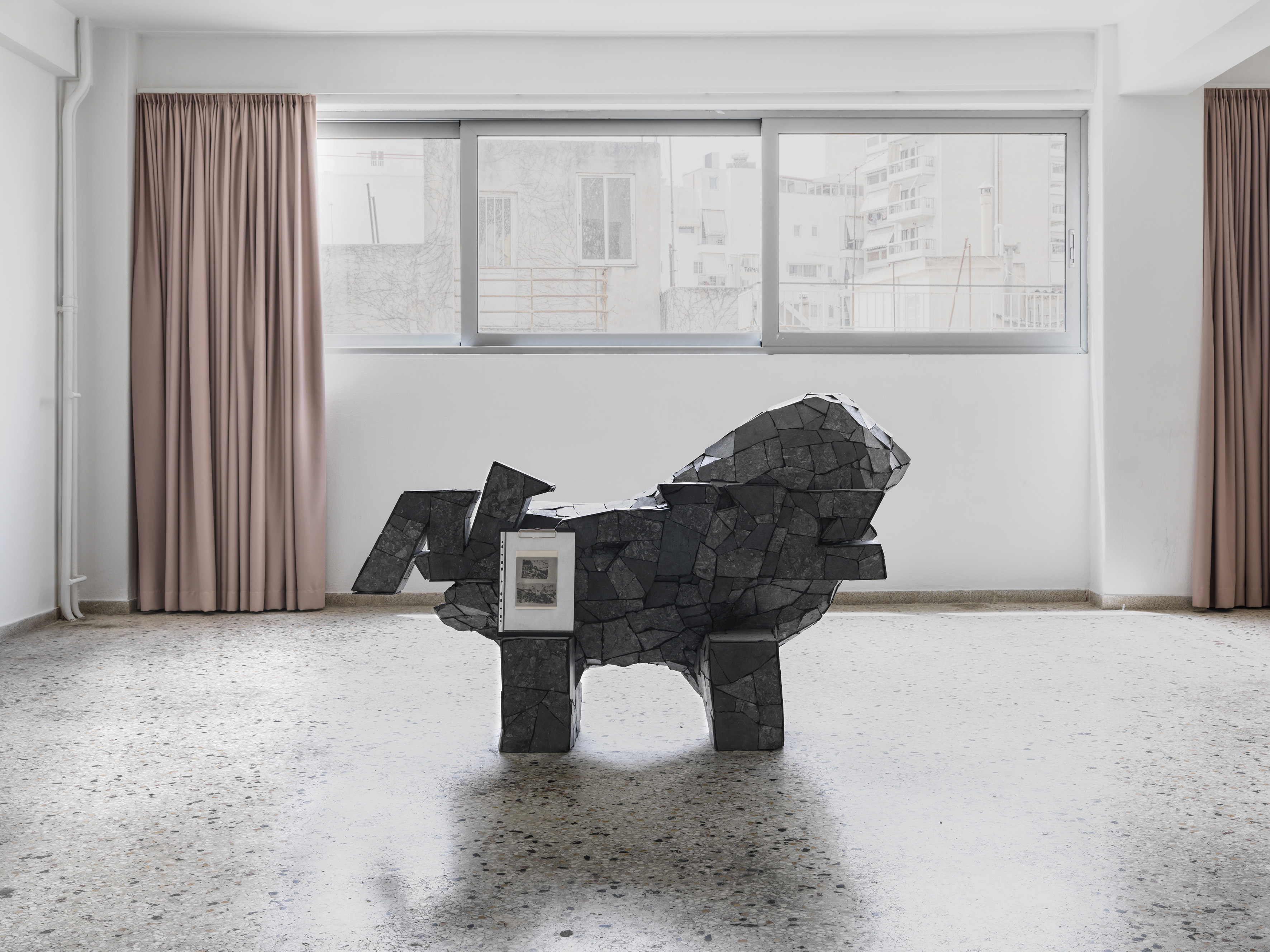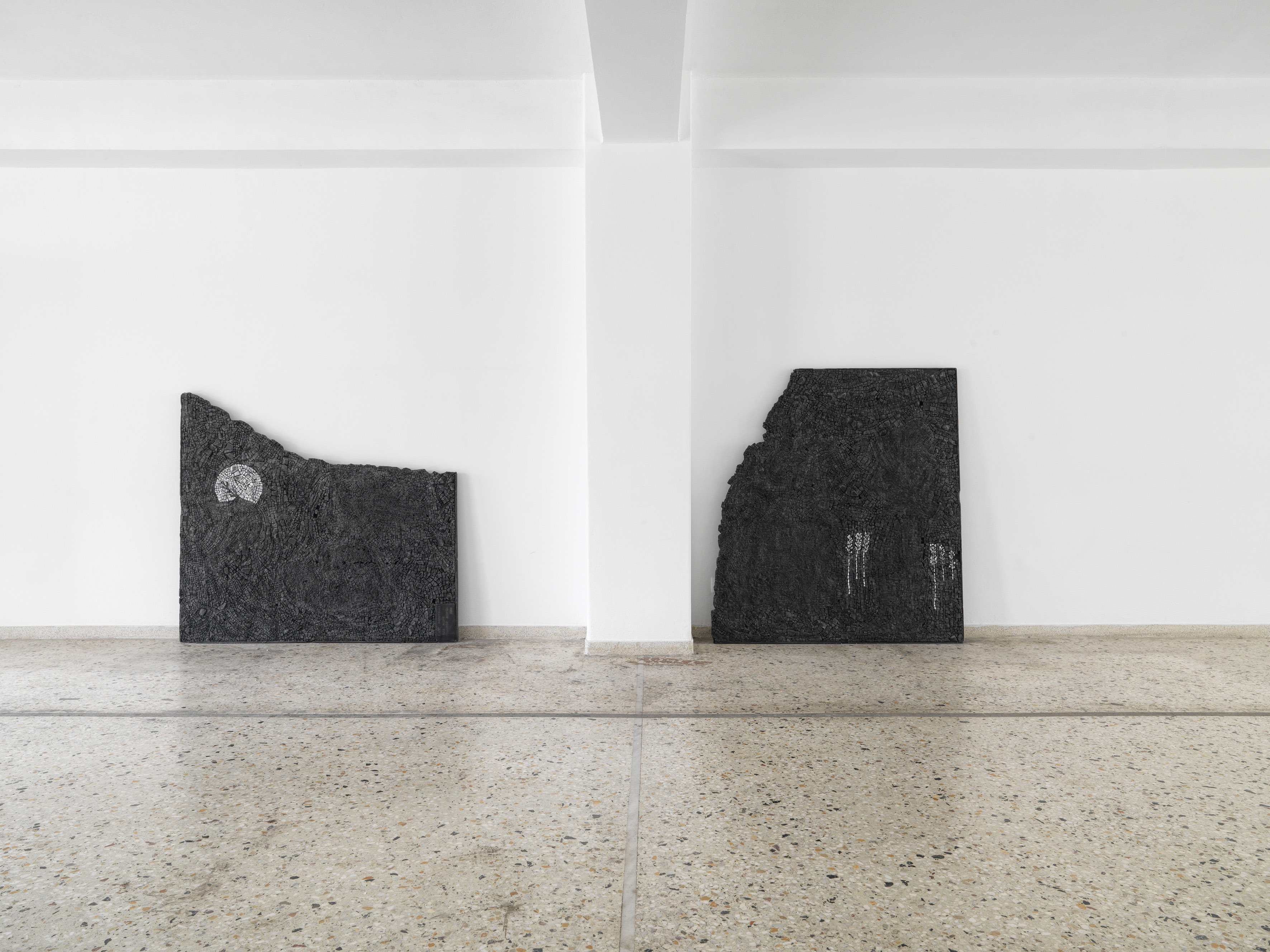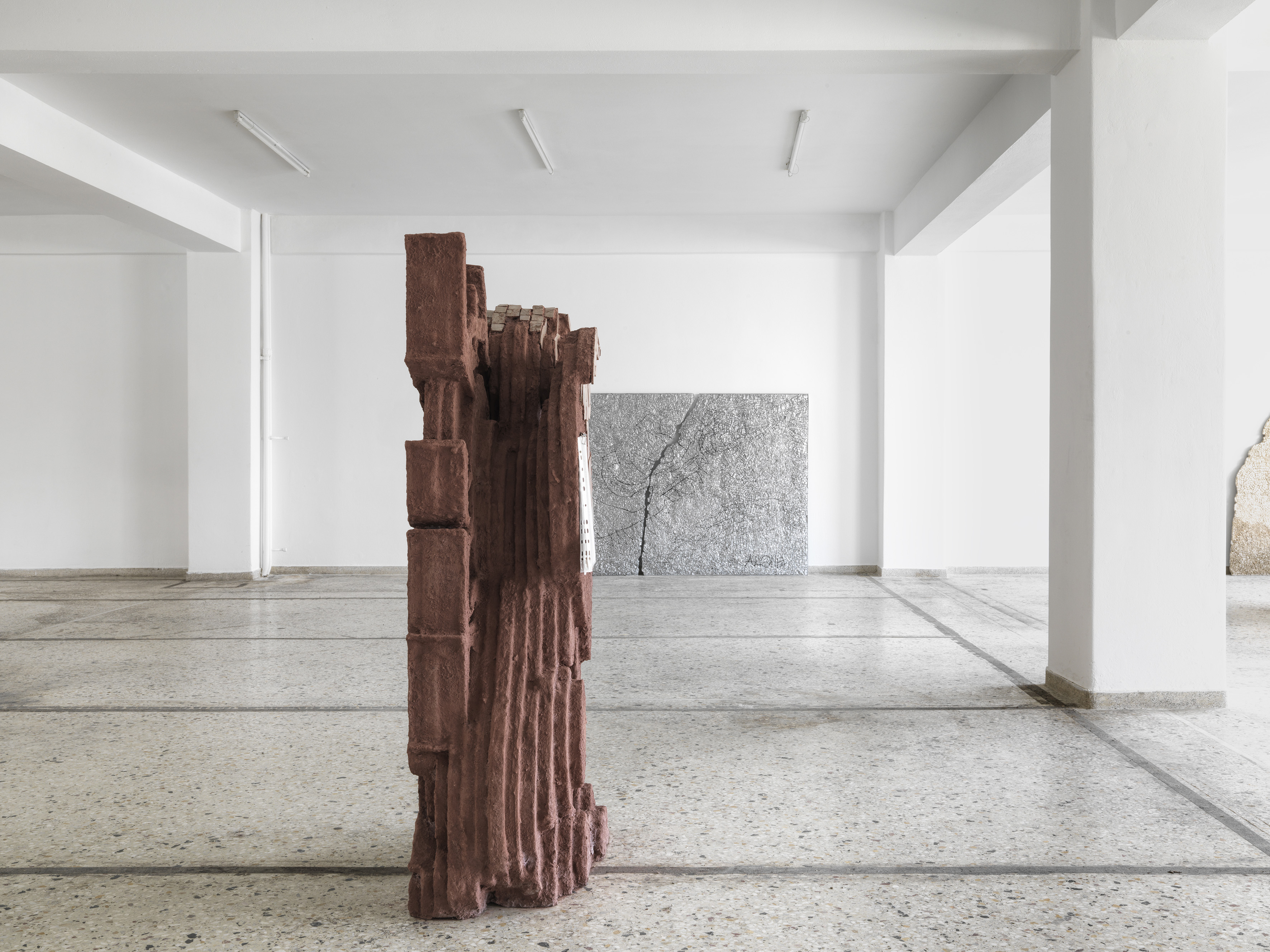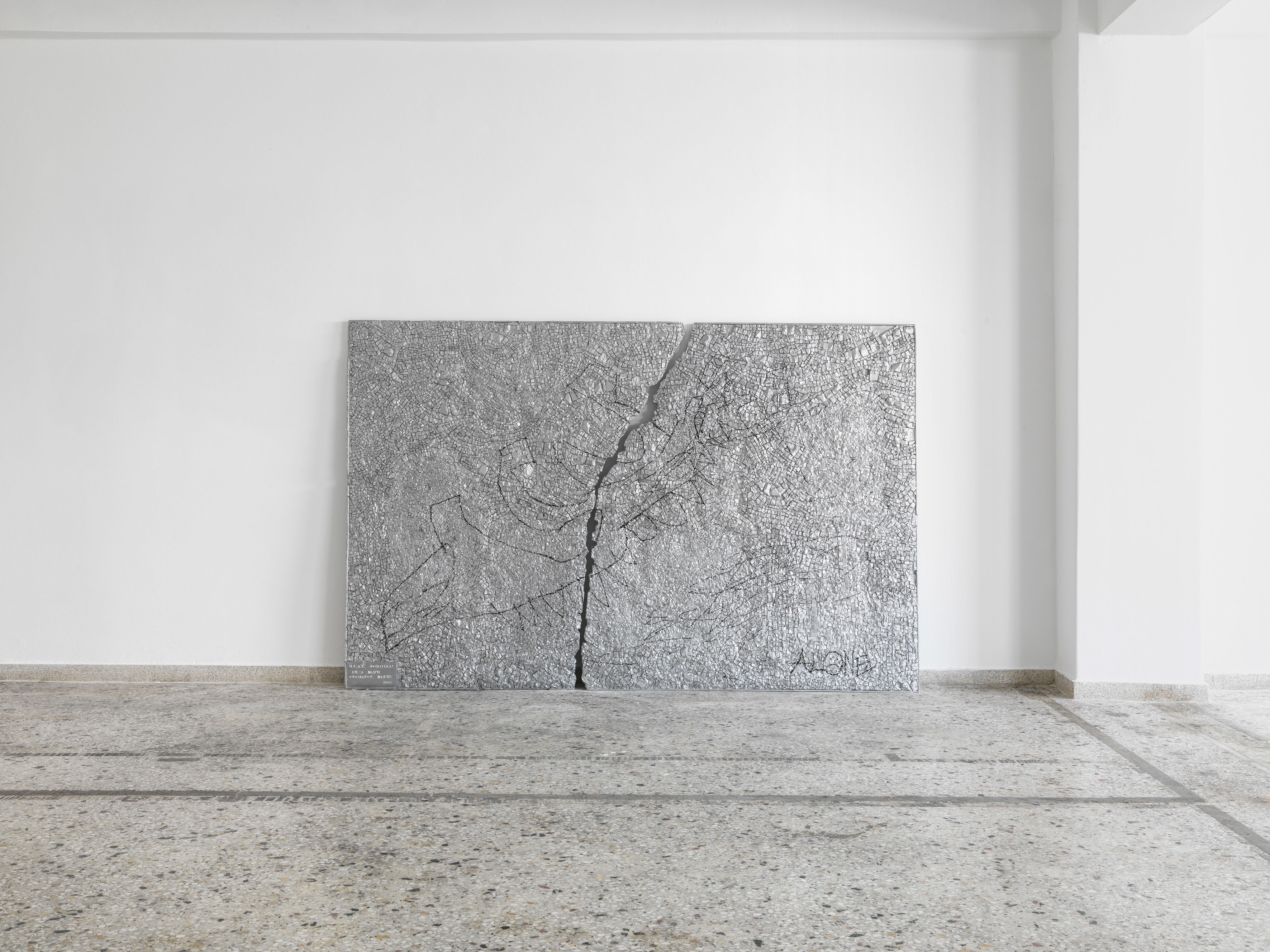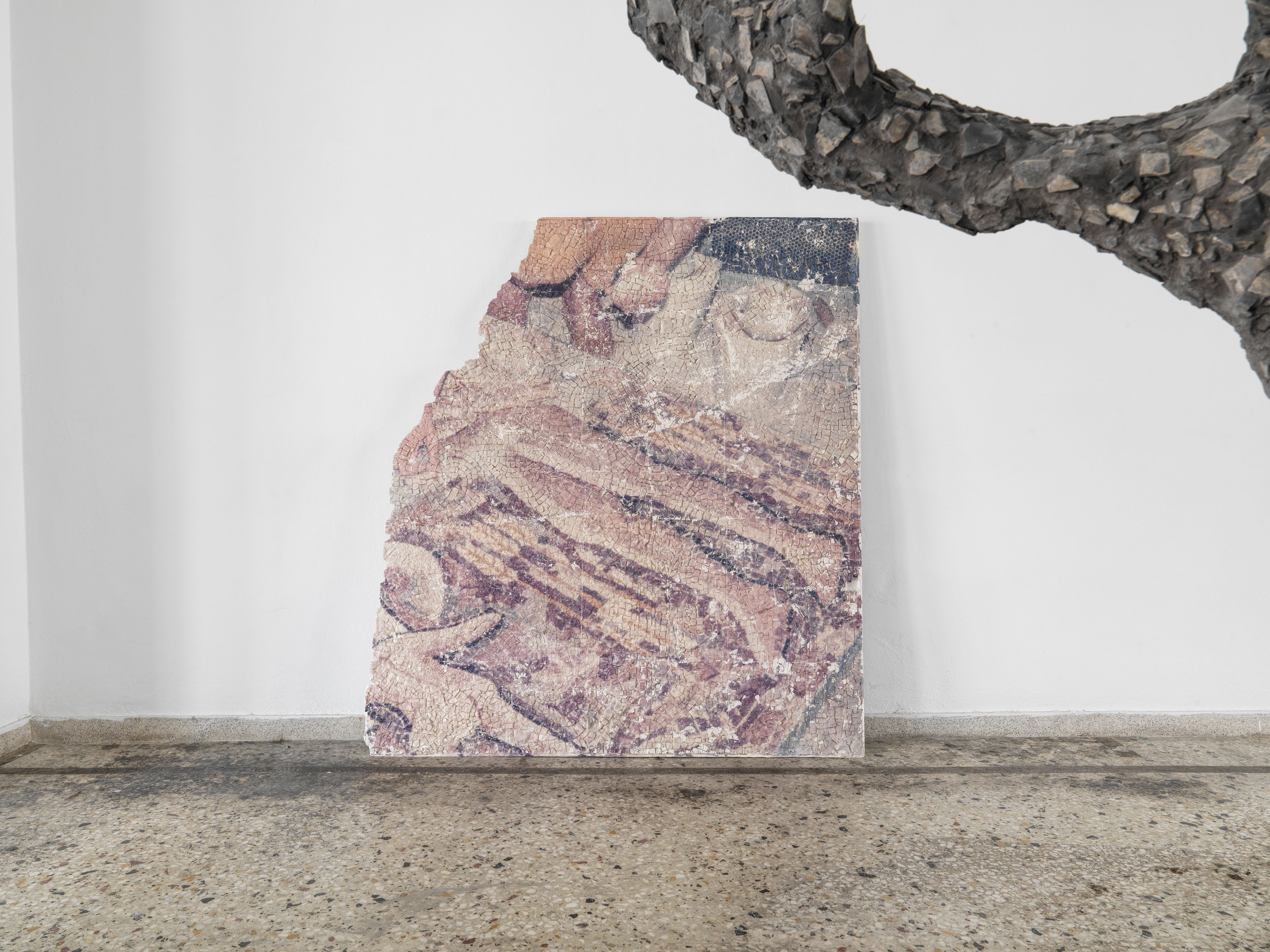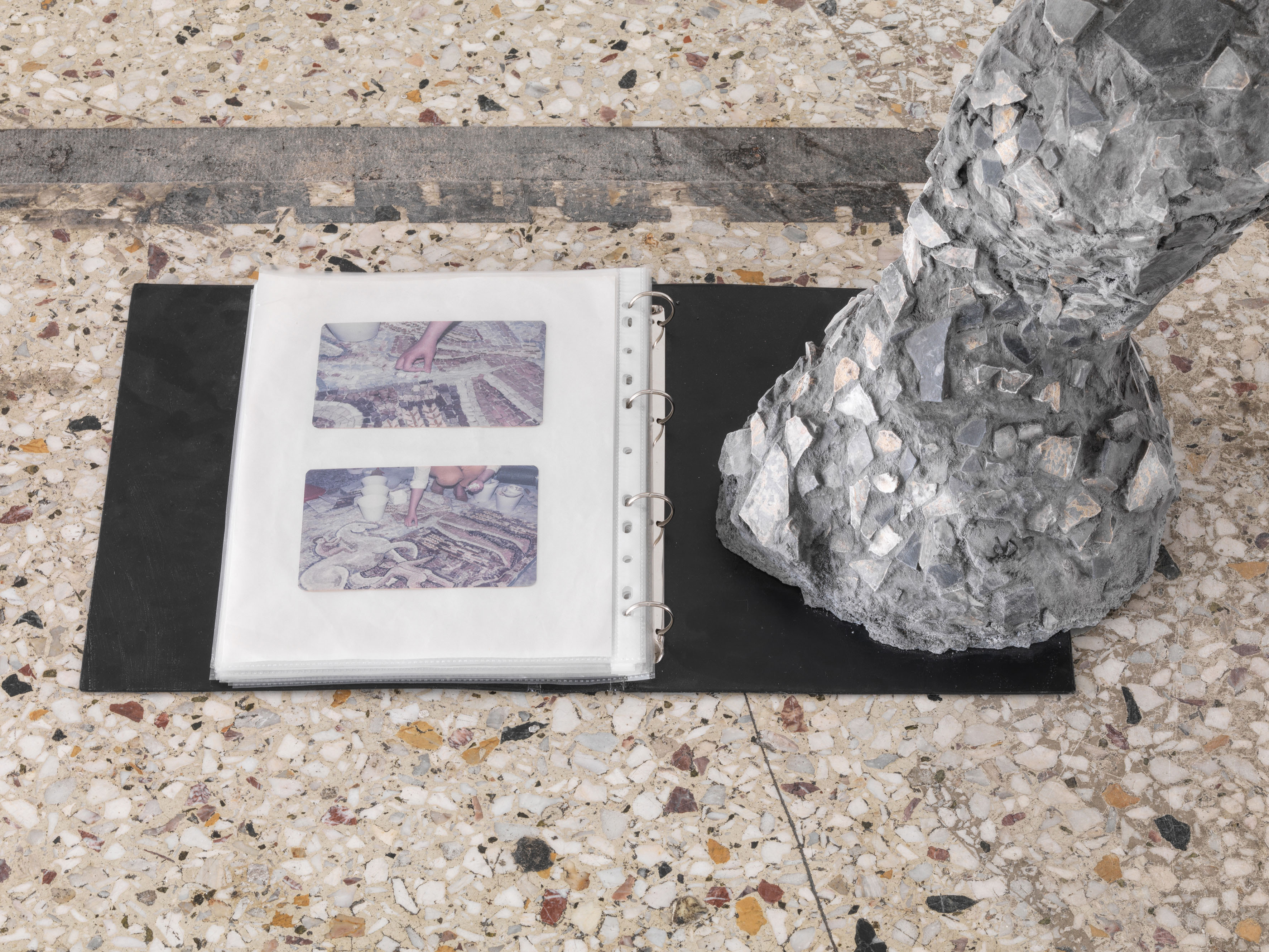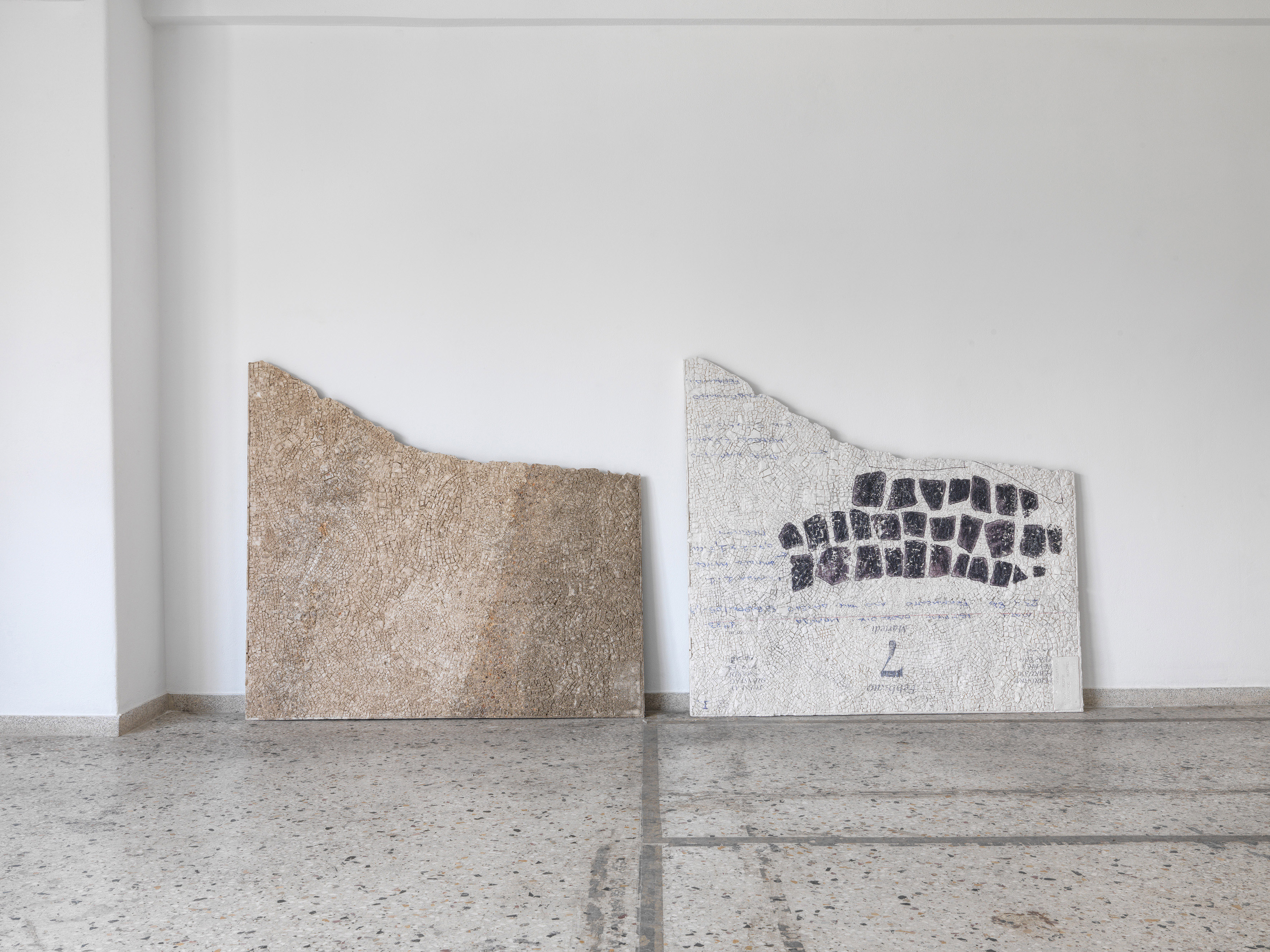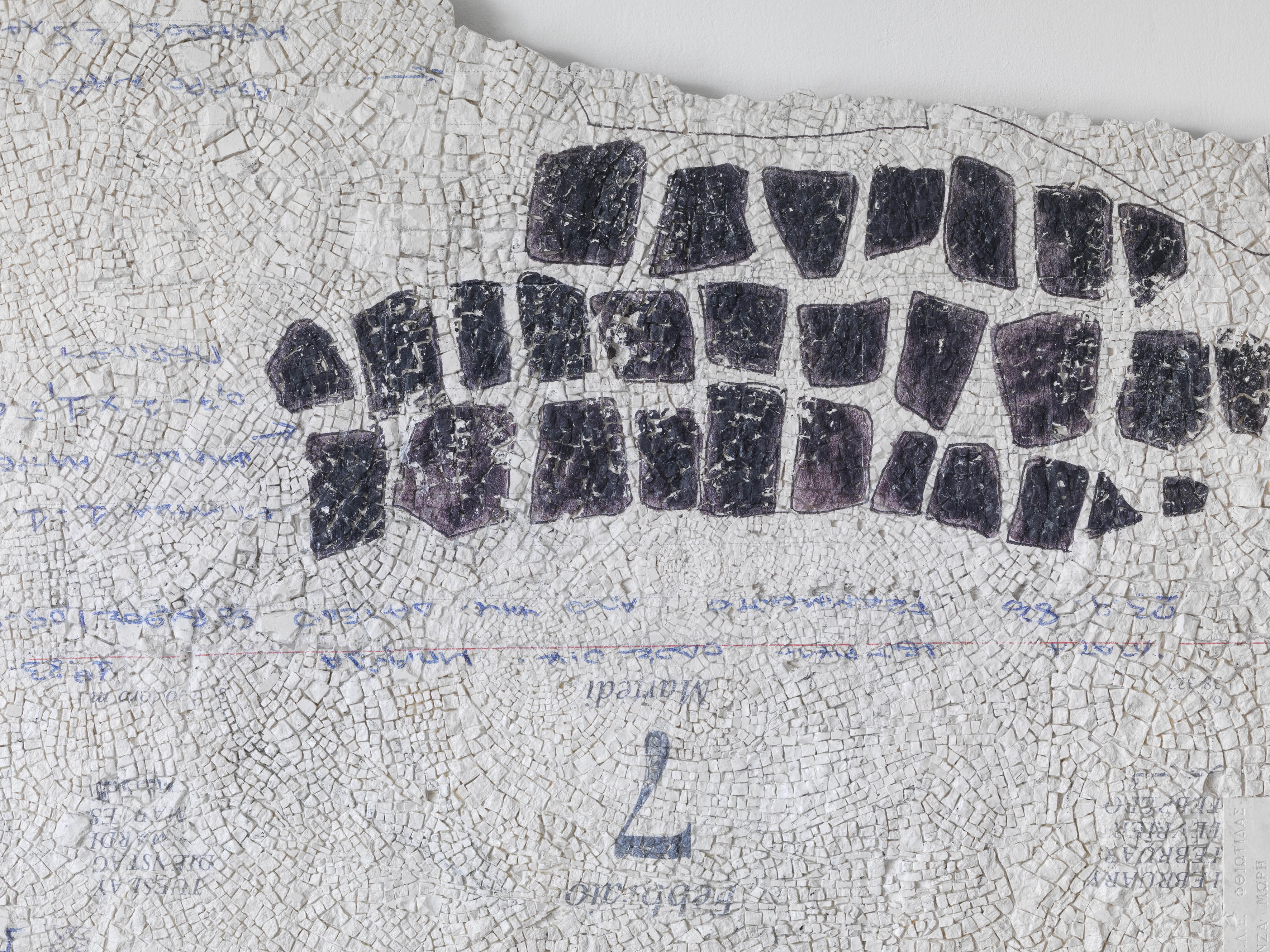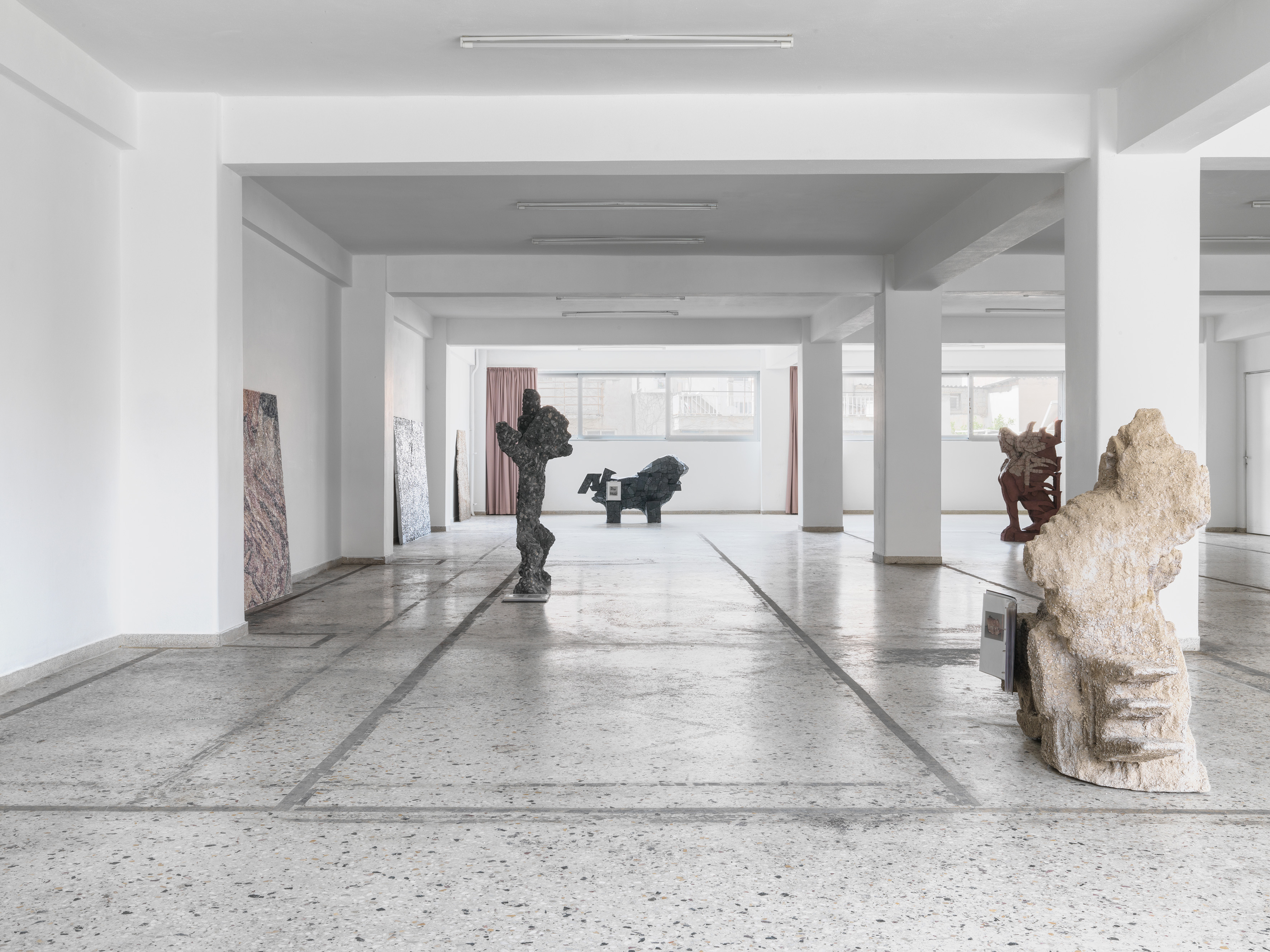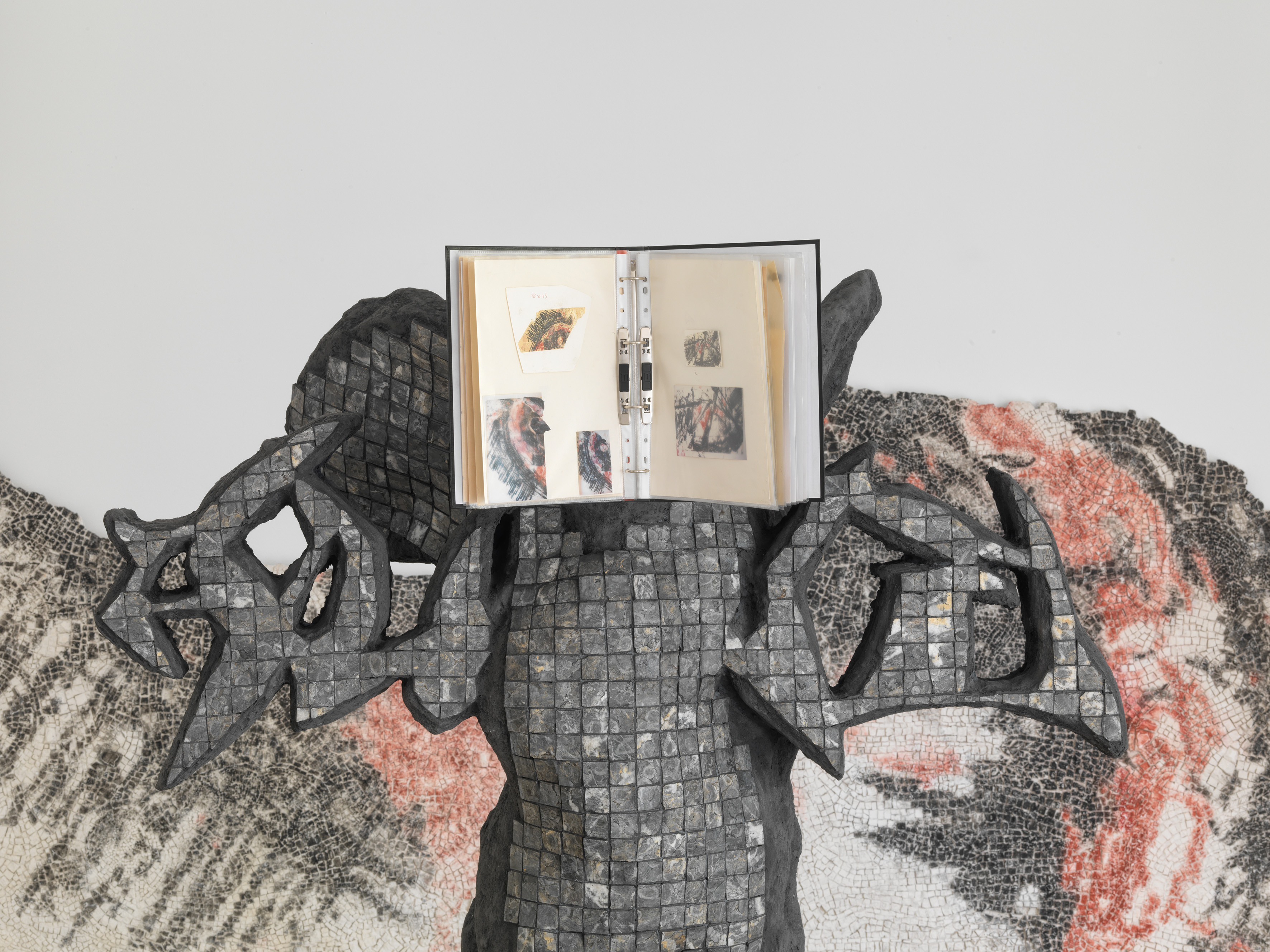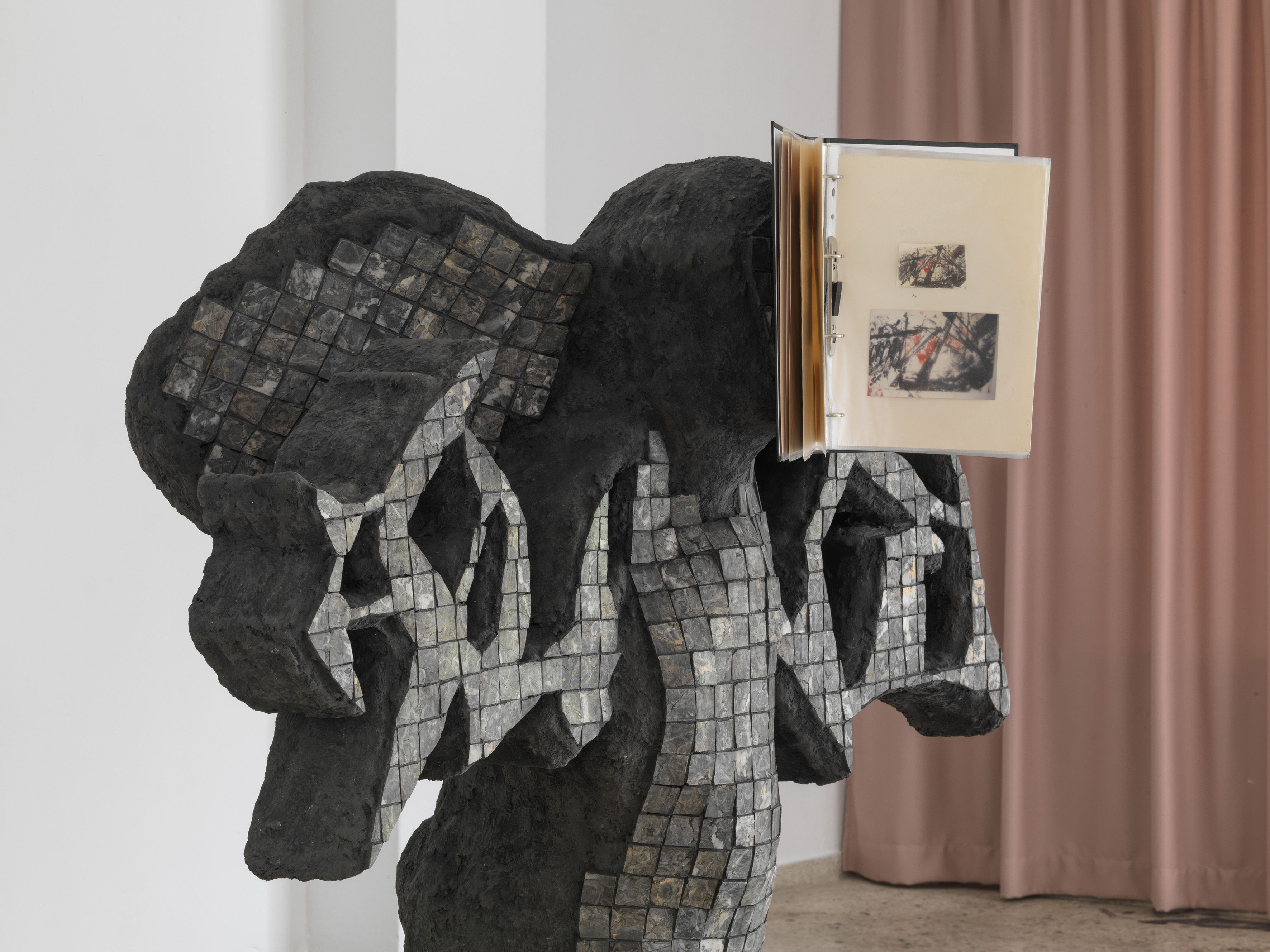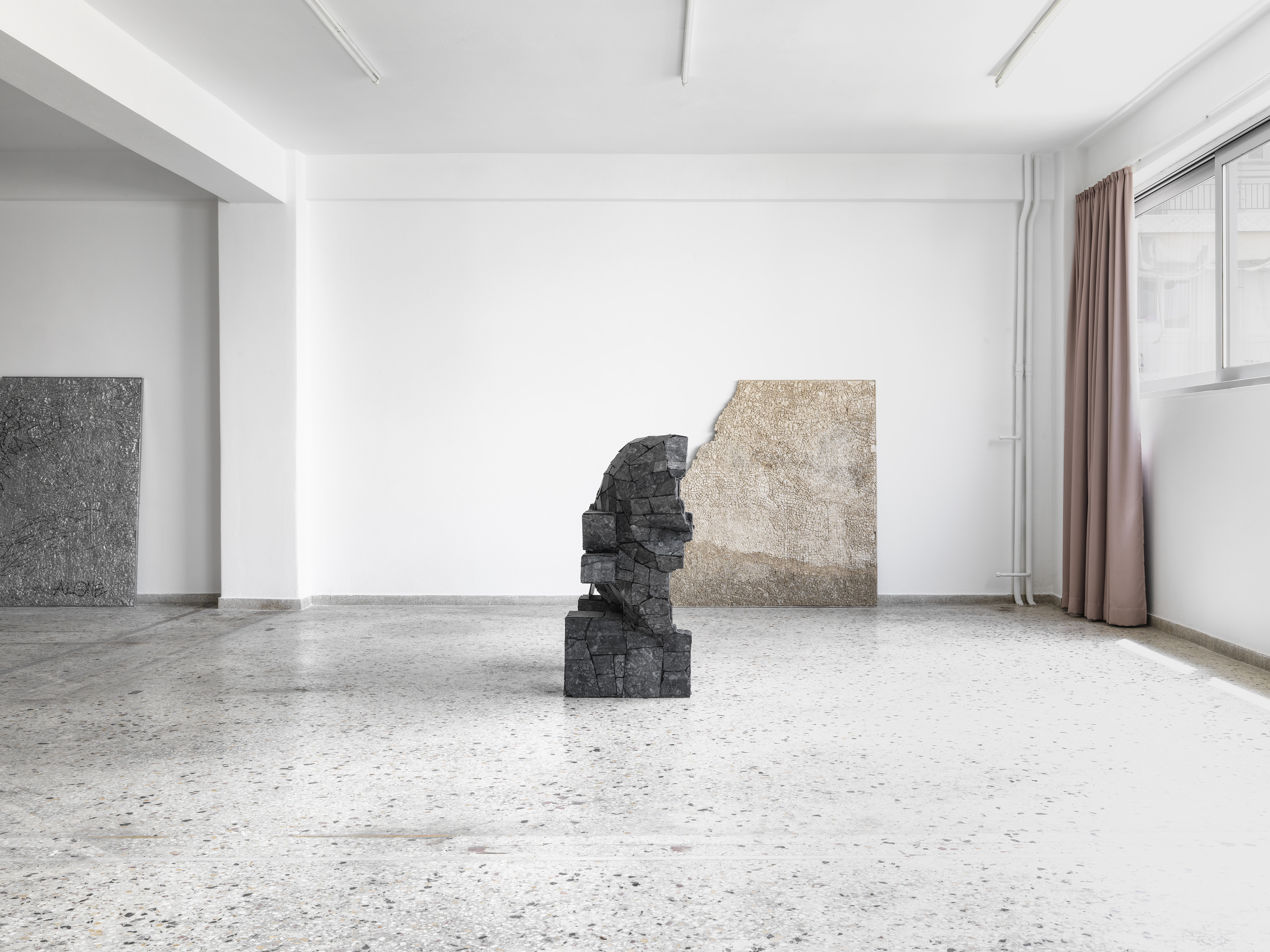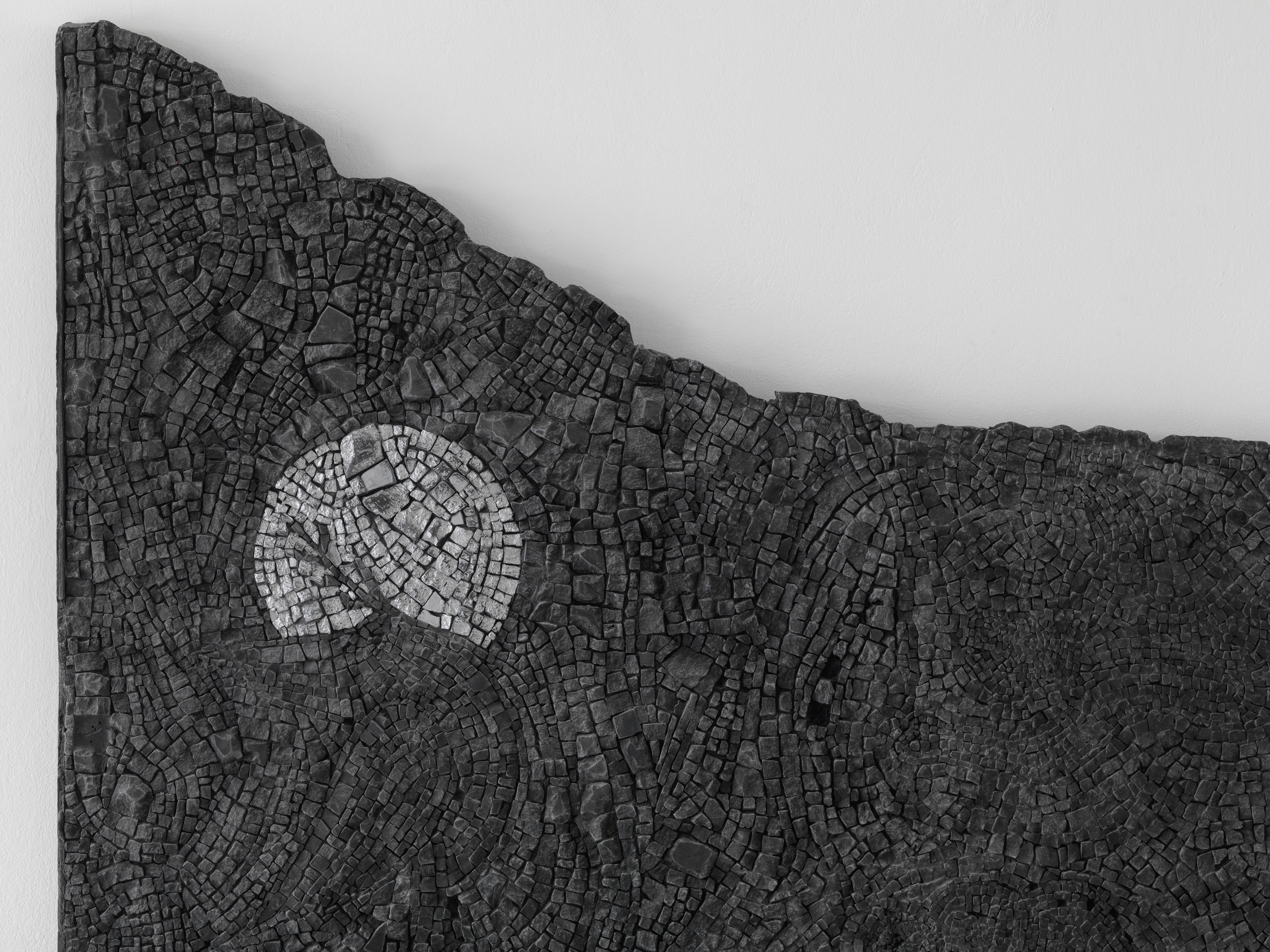ALONE
“ALONE” at TAVROS, May 16th-July 6th 2024
ALONE presents a series of ten sculptures which form part of an origin story. In an abandoned urban playground in Lamia, Petros Moris’ hometown, a mosaic work crafted by his parents caught his interest once tagged by a local graffiti artist with the word: Alone. Moris extracted this ‘ready-made’ from public space, fascinated by the complexity of its inadvertently communal workmanship, labour and authorship. Through the anonymous gesture of tagging and Moris’ own appropriation, the mosaic transforms into what the artist calls an ‘assembled cultural artefact’.
ALONE is then a parable on provenance, asking what matter are we made of? Who shapes our identities? What flows and fluxes of information do we contain? Which soil, earth, urban detritus are we derived from? Biography may be reductive, but to what extent? ALONE posits itself as an open-ended query, born from a hesitancy regarding how much of one’s work should or could be a revelation of self, demonstrative of the demons of childhood, the fault lines of our past. Physical presence, whether human, geological or urban, internalised here as fractured and broken, is presented, perhaps misunderstood yet always tangible in its multilayered complexity.
One speaks a word: I.
Out of this stream
the great forms..[1]
Compressed in the eerie post-human sculptures and ghost-like mosaic slabs (cast from the original found mosaic) inhabiting TAVROS for a few months are the complex wirings of Moris’ circuitous thinking about scale, entropy, the geological and the urban. The importance of scale implicit in mosaic-making is ever-present, from the abstract non-human (molecular or quantum) to the human and cultural, to the ‘sensible’, that which can be understood by humans as a representational whole. Scale also embodies genealogy: from parent to child, from past to present. In the urban entropy of the abandoned playground situated on archaeological finds, scale zooms in and out from literal to cosmological, resonating the camera eye’s constant movement from the domestic to the astrological in Powers of Ten.[2]
And then, there are the creatures: riffing off the sculptural presence of ancient toys or votive offerings found in nearby graves (of the kind Moris assumes could have been found in the abandoned playground). Moris lowers the definition of the original references and meta-morphs them into physical space, scaled up into impressive haptic and spatial objects via the processes of digital fabrication and traditional sculpting techniques. The toys, as ancient cultural artefacts, are transformed via technological mediation back into cultural objects of an altogether other order: ghoulish creatures, half playthings, half haunting species from the underworld. These epic, sacred, mythological hybrid characters, sublimated from ancient games to contemporary works, function both as sculptural continuities and as material ruptures. How much do these works differ from his parents’ mosaics? How much of the personal or social, historical, technological is condensed into their materiality? Moris, in this strange parade of unworldly beings, claims ambivalence, discomfort even, with what they imply and reveal. Do these creatures concede too much? Are they a warning of what is to come?
As an extension of his sculptural offerings, Moris includes for the first time, a text as an integral part of the exhibition format: a torrent of words, alluding to his labyrinthine philosophical and psychoanalytical readings, forming an essay of sorts that hovers between personal annotations and magical thinking. Deliberations here are dense as matter.
Language urgent, material calcified, and flesh immortal, all grounded in earth.
ALONE marks the third in a series of exhibitions at TAVROS this year, dedicated to thinking about our interconnectedness with earth, soil, and the subterranean.
Maria-Thalia Carras
[1] Louise Glück, Faithful and Virtuous Night, Manchester: Carcanet Press, 2014, p. 31
[2] Charles Eames and Ray Eames, Powers of Ten (1977), film.
